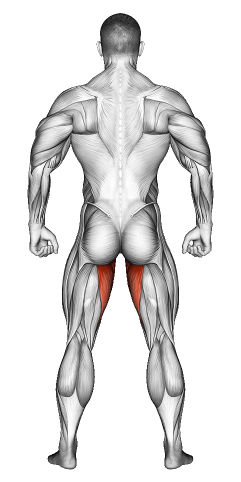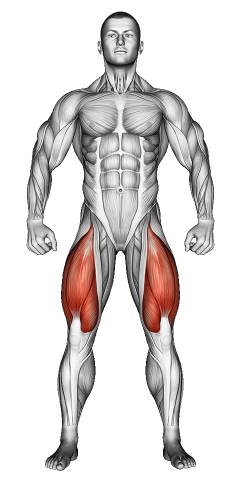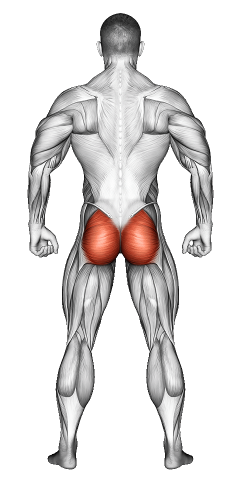Side Lunge Stretch: Video Tutorial & Stretch Guide

Written By: Claude Michael
Updated: Dec 18, 2024
| Workout | Side Lunge Stretch |
| Primary Muscle Group | Adductors |
| Secondary Muscle Group | Quads,Glutes |
| Equipment Required | None |
| Force Type | Static Stretch |
| Mechanics | Isolation |
| Exercise Type | Flexibility and Mobility |
| Difficulty | Beginner |
Side Lunge Stretch: Video Tutorial & Stretch Guide
- 1.Side Lunge Stretch: Muscle Groups
- -1.1Primary Muscle Group
- -1.2Secondary Muscle Group
- 2.Side Lunge Stretch: Step-by-Step Guide
- 3.Side Lunge Stretch: Overview
- 4.Side Lunge Stretch: Benefits
- 5.Side Lunge Stretch: Pro Tips & Advanced Techniques
- 6.Side Lunge Stretch: Progression Plan
- 7.Side Lunge Stretch: Frequently Asked Questions (FAQs)
Side Lunge Stretch: Step-by-Step Guide
- Step 1: Stand with your feet wide apart, about twice shoulder-width. Point your toes forward and keep your chest lifted. Start by placing your hands on your hips or in front of you for balance.
- Step 2: Shift your weight to your right side by bending your right knee and lowering your hips. Keep your left leg straight. As you lunge to the side, feel the stretch along your left inner thigh. Keep your chest up and avoid leaning forward.
- Step 3: Hold this position for 15-30 seconds. Take deep breaths and, with each exhale, try to relax into the stretch a bit more. Focus on feeling the stretch in your inner thigh and hip.
- Step 4: Return to the starting position by pressing through your right foot and bringing your body back to center. Now, shift to your left side by bending your left knee, keeping your right leg straight. Hold this position for 15-30 seconds.
- Step 5: Repeat the stretch on each side 2-3 times. With each repetition, try to sink a little deeper into the lunge, increasing your range of motion and flexibility.
Side Lunge Stretch: Overview
The Side Lunge Stretch improves flexibility in your inner thighs, glutes, and hamstrings. This stretch also enhances hip mobility, which helps with daily movements and other workouts. By regularly practicing the Side Lunge Stretch, you create a foundation for better balance and flexibility in your lower body.
Side Lunge Stretch: Benefits
The Side Lunge Stretch targets tight inner thigh and hip muscles, reducing tension and increasing mobility. Stretching your lower body regularly helps prevent injury, improves range of motion, and keeps your hips open for better movement. This stretch is a great addition to any lower body workout or cooldown routine.
Side Lunge Stretch: Pro Tips & Advanced Techniques
- Focus on Form: Keep your back straight and chest up as you lunge to the side. This posture protects your lower back and helps you engage the right muscles.
- Engage Your Breathing: Use deep breaths to relax. Inhale as you hold the position, and with each exhale, try to sink slightly deeper into the stretch.
- Go Slow and Steady: Avoid bouncing or rushing. Move smoothly to allow your inner thigh muscles to release fully.
- Increase Depth Over Time: As your flexibility improves, try to sink your hips lower, increasing the depth of your side lunge.
Side Lunge Stretch: Progression Plan
Beginner
Intermediate
Advanced
Side Lunge Stretch: Frequently Asked Questions (FAQs)
What muscles does the Side Lunge Stretch work?
+It stretches your inner thighs, glutes, and hamstrings, helping to increase flexibility and release tightness in these areas.
Can I add the Side Lunge Stretch to any workout?
+Yes! This stretch works well in any lower body or hip-focused routine. Use it to relax and open your inner thighs and hips.
Does the Side Lunge Stretch help with hip mobility?
+Absolutely. This stretch opens up your hips, helping to improve mobility and balance.
How often should I do the Side Lunge Stretch?
+Include it in your routine 3-4 times a week, especially if you focus on lower body workouts or need hip flexibility.
What mistakes should I avoid?
+Don’t hunch your back or lean forward. Keep your movements smooth, and focus on controlled breathing to allow your muscles to relax deeply into the stretch.
Share
Don’t Wish for It, Work for It – Join the FlexXP Newsletter Today!
Thank you for signing up for the FlexXP Newsletter!
This site is protected and the Google Privacy Policy and Terms of Service apply.


